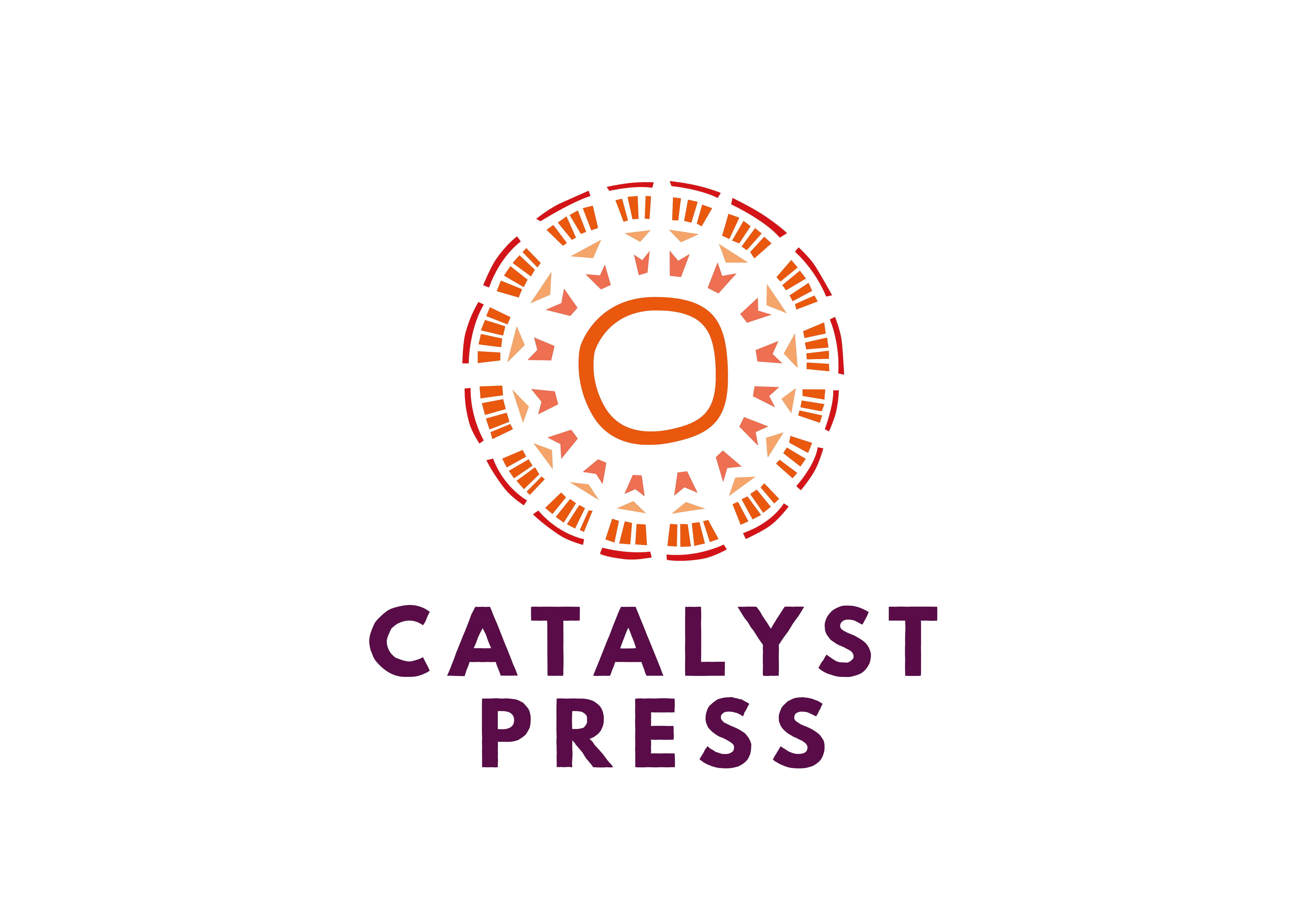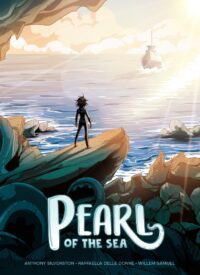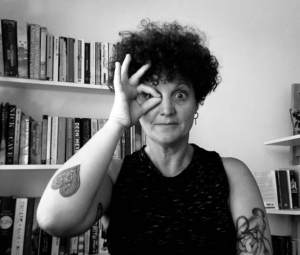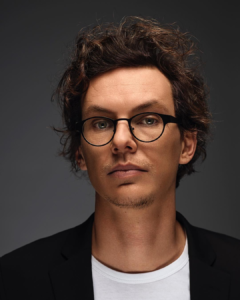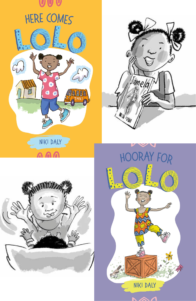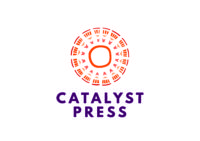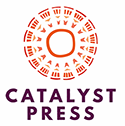At the end of January, we finally get to share Pearl of the Sea with the world—an absolutely stunning middle-grade graphic novel about a young South African girl who meets a sea monster while abalone poaching. Everyone at Catalyst has loved working with Pearl of the Sea’s incredible creative team—Anthony Silverston, Raffaella Delle Donne, and Willem Samuel of Cape Town’s renowned Triggerfish Animation Studio—to bring this book to global readers, and it’s been such a treat to receive such amazing reviews in the months leading up to its release. If you haven’t already, make sure to pre-order your copy right now, or check out the book in stores January 31st (or March 1st for readers in South Africa).
Today, I have the immense privilege of introducing you to Anthony, Raffaella and Willem as we chat about the making of this remarkable graphic novel. Let’s dive in!
SarahBelle Selig: Many of our readers have never been to South Africa. Can you tell me more about the South African towns that inspired the setting of this book? What cultures and histories are you paying homage to?
Anthony Silverston: I grew up in Cape Town in a little seaside village called Kalk Bay, which is one of the places that had a big influence on the story. It is a thriving place now—mostly due to tourism—but at the time it was a quiet, relatively poor fishing village without too many children. I was not a strong swimmer so was actually scared of the ocean, but I have fond memories playing in the rock pools near the tidal pool, looking for shells and unusual creatures. There’s a little harbor where the local fishermen moor their brightly-coloured boats and clean and sell freshly caught fish, or stand on the pier with their rods over the wall, while the seals play in the waves below. Elements of this all made their way into the book.
There are a few other towns along the coast of South Africa that also inspired the setting, most of them relying more on tourism now, like Arneston on the East Coast, which has a particularly picturesque arrangement of thatch-roofed fishermen cottages up on a hill, and Paternoster which is along the windswept Western Coast of South Africa and has a number of seafood restaurants along the beach and rocks. Just a little inland from there is the West Coast Fossil Park, a natural heritage site that inspired a key scene in Pearl of the Sea. It has a great excavation site and display of some of the prehistoric land and sea mammals that existed in the area about 5 million years ago. Hopefully the book introduces readers to a world that has elements evocative of any coastal town in South Africa and the people there. For example, after finishing the book, I passed through Lambert’s Bay which reminded me of Pearl’s home, and I even found a store called “Rusty’s” there that could’ve been lifted straight from the book.




Reference images from Kalk Bay, via Anthony Silverston
Raffaella Delle Donne: Having done a PhD thesis which explored the intersection between indigenous religion and popular culture in South Africa, I’ve always been interested in colonial history and post-colonialism. So, when I came across illustrations of sea monsters that were supposedly European sailors first-hand accounts of encounters with new marine animals, I was immediately inspired to tell a “sea monster” story set in post-colonial times and flip that narrative. Like a lot of imagery and traveler’s accounts from that time, anything Other was framed by Europe’s fear of the unknown. A fear which then manifested itself in the oppression, subjugation and exploitation of Africa, its people and its resources—making Europeans the real monsters.
SBS: Something I’ve really wanted to explore with you is the complexity of the poaching issue in South Africa, which plays out in this book. Can one of you speak to this? How does Pearl’s story reflect this issue—and what role does conservation play in this dialogue?
RDD: When we started adapting Pearl from a screenplay into a graphic novel, I had, coincidentally, started adapting the book Poacher by Shuhood Abader into a live-action screenplay. His book was invaluable because it’s a personal account of the world of poaching, but it also gave me insight into how poaching needs to be understood within the context of a sustained history of small-scale fishing communities being disenfranchised when it comes to fishing rights and access to marine resources. Of course, conservation is essential, especially now that we know marine resources are dwindling, but I don’t think it’s small-scale fishing communities whose heritage and relationship with the ocean dates back hundreds of years that are the problem. It’s large-scale, commercial fishing companies that are ravaging the oceans.
AS: Unemployment in South Africa is extremely high—like Pearl’s father, over a third of adults are unemployed—so Pearl represents one of many who can so easily get sucked into this dangerous world, because it’s a way to help put food on the table. Apparently In 2018, abalone-poaching was listed as South Africa’s third-largest fishery business. It’s a lucrative yet dangerous black-market industry, allegedly controlled by gangs in coastal areas in the Eastern and Western Cape.
It’s a complex situation, as local communities who were previously self-sustaining, living off the ocean, are now sometimes forced into a life of crime, unable to feed their families except through these kinds of criminal activities, because the fishing permits are awarded to larger companies who then trawl the sea indiscriminately. So little is known about our oceans, and yet species are being fished to extinction. In my earlier time spent studying science, I’d often read up on some of the issues our oceans face and it was pretty scary to find out how delicate the natural balance is.
I would love to have focused on the poaching subplot even more, but the focus really was on Pearl and her relationship with Otto, so I’d almost rather the story inspires people to want to know more about the issue and actually go and read up on it themselves.
SBS: How long does a graphic novel like this take to produce? I know there were a few other people involved in production as well. Can you tell me a bit about the steps it takes? What comes first as you’re developing it—the visualization of the characters and the panels, or the details of the story? You’re all in film—how similar is this process to developing an animation?
AS: How many years do you have? This project did start out first as a film. Raffaella came up with the idea of a story about a sea monster while I was still directing on [the animated film] Khumba. At the time, I didn’t have headspace or feel ready to direct another film back-to-back, and raising finance for an animated feature is not easy, so development slowly carried on with me dipping my toe in every now and then. The story did go a little circular for a while, but when I did fully engage, I realized I needed to find a personal hook or angle if I was going to direct it. I realized that, because I had been grappling with my own monsters growing up, I had ended up retreating into my shell, while another person close to me often lashed out with anger and aggression instead. This had prevented the relationship from evolving. A lot of people have a huge fear of showing vulnerability, yet it can prevent one from connecting to others if one is not able to. So, that was what the story became about.
Unfortunately, when we were finally ready to pitch the film, we heard about another Sea Beast movie in development at Netflix and decided to use the story as a test case for a graphic novel instead, as it had been a route we’d been considering at Triggerfish for a while, starting with KARIBA which we had supported through the team’s Kickstarter campaign. [Catalyst Press will be releasing KARIBA globally in June].
I brought on Willem Samuel who had experience creating comics and was finishing up as head of story on our feature film Seal Team, and had a gap before moving on to [the animated series] Mama K’s Team 4… The writing process was different to a film in that I wanted to try and have as little text as possible, because Pearl mostly retreats inwards, so Willem brought a lot of extra layers to the story through his visual storytelling, which was amazing to see. It still felt like we had to storyboard a whole feature film as it involved the same challenges of translating script into visuals, but the layout of the panels could affect the speed at which one reads and how the story comes across.
Willem did a fantastic job with the layout and dynamic posing, especially of the whole end action sequence, but because of the time it took to confirm the basic story and layout of the full book, he was not able to do all the final visuals. We brought on a really strong concept artist, Jessie Ochse, who powered through and inked all the pages in record time and then Clyde Beech, who had worked on the comic Kwezi, did all the colouring. We had discussed the intended mood for each sequence, but I really loved his palette and he gave all the rendered images a wonderful richness and quality that really captures the South African setting.




Early sketches and storyboard
As more of the finished pages fell into place, we tweaked certain visual elements for flow, and even added a story element that I felt made all the difference—and we were tweaking the dialogue right to the very end. It definitely took longer to execute than we’d expected, but it’s so rewarding to hold a physical copy of something in your hands with rich visuals that are beautiful to flip through, compared to a script which might only be read by the crew.
Willem Samuel: Even though we had a film script to work from, I feel the real writing only started with the page layouts and roughs. As we worked through them, the scenes would reveal themselves as would the characters. We worked through the whole book—doing a rough version of each page and here we did most of the editing and rearranging. We stuck up all the pages on a board and would cut stuff out, move around and so forth. So we basically wrote the story visually first and then added the dialogue after—and I think one can immediately see that when you open the book. I’m very happy that we did it like this and that it leans so heavily on the visuals—because with comics you can do more than with film and I think we really pushed the medium to give us this beautiful book….
Stay tuned for part two of our interview! Pearl of the Sea is out in the US on January 31, and is available through your favorite bookseller.
